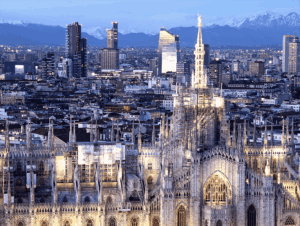Italy is beginning to emerge as Europe’s most sophisticated wealth attraction destination through a coordinated policy framework that creates synergistic investment opportunities across multiple asset classes. Rather than relying on traditional golden visa schemes being abandoned throughout the European Union, Italian policymakers have constructed an integrated ecosystem where tax incentives, cultural assets, and real estate development reinforce each other to generate superior returns for international capital.
The strategy centers on three interconnected policy pillars: a predictable flat tax regime for high-net-worth individuals, dramatic reductions in art market taxation, and substantial infrastructure investment supported by European Union recovery funds. This coordinated approach has produced measurable results, with Italy attracting approximately 3,600 millionaire migrants in 2025 while competitor jurisdictions experience net outflows.
The policy framework’s sophistication lies in its recognition that sustainable wealth attraction requires creating genuine value rather than temporary tax arbitrage. By simultaneously addressing taxation, cultural infrastructure, and physical development, Italy has positioned itself to capture long-term investment commitments rather than transactional capital flows.
Flat Tax Foundation Anchors Investment Decisions
Italy’s flat tax regime, established in 2017 and refined to €200,000 annually in 2024, provides the foundational certainty that enables complex investment planning. The regime’s exemption of foreign-held assets from Italian wealth, inheritance, and gift taxes creates particular appeal for family office structures seeking multi-generational wealth preservation strategies.
Between 2017 and 2023, nearly 4,000 individuals joined the program, with uptake accelerating significantly in recent years. The regime’s advance tax ruling capability allows potential residents to obtain legal clarity before relocation, eliminating the regulatory uncertainty that traditionally deterred investment in European jurisdictions with complex tax environments.
The predictability premium has proven particularly valuable as other European countries implement wealth taxes and tighten residency requirements. Spain, Switzerland, Norway, Belgium, and the Netherlands have all introduced or expanded wealth taxation, while traditional low-tax jurisdictions like Monaco and Switzerland offer limited appeal to American citizens subject to worldwide income taxation.
Art Market Revolution Creates Cultural Capital Hub
Italy’s reduction of art market value-added tax from 22% to 5%—the lowest rate in the European Union—represents a strategic repositioning rather than simple tax competition. The reform addresses years of market share erosion to France and Germany, which had already reduced their art VAT rates to 5.5% and 7% respectively.
The tax differential had created significant competitive disadvantages, with artworks costing up to 18% more in Italy than in France due to combined tax and operational factors. Industry analysis suggests the reform could generate €1.5 billion in annual turnover for Italian galleries, antique dealers, and auction houses within three years, producing an estimated €4.2 billion in broader economic impact.
The reform extends beyond domestic sales to import taxation, potentially establishing Italy as a preferred trading hub for international art transactions. This infrastructure advantage complements Italy’s existing cultural assets and conservation expertise, creating a comprehensive value proposition for art market participants.
The policy’s timing coincides with increasing global art market consolidation and the rise of art as an alternative investment asset class. By eliminating tax-based competitive disadvantages, Italy can leverage its unparalleled cultural heritage and restoration capabilities to capture greater market share in the expanding global art economy.
Real Estate Premiums Reflect Fundamental Demand
Italian real estate markets have experienced substantial appreciation driven by both domestic infrastructure investment and international buyer demand. Milan residential prices increased 15% to 28% over the past five years, with prime areas like Brera and Porta Nuova exceeding €15,000 per square meter.
The appreciation reflects genuine supply constraints and infrastructure improvements rather than speculative bubbles. Energy-efficient new construction averages €7,250 per square meter and typically sells out before completion, indicating strong underlying demand from end users rather than purely financial buyers.
Luxury hospitality investment has surged 63% to €1.3 billion nationally, with significant institutional participation including LVMH’s acquisition of Castello di Urio for conversion to a Belmond-operated luxury hotel. This institutional validation creates positive spillover effects for residential markets by confirming long-term destination appeal.
Rome and Como have emerged as particular beneficiaries of hospitality investment flows, with Como capturing 19% of national hospitality investment despite its limited geographic scale. This concentration demonstrates how cultural assets and natural amenities can generate disproportionate investment returns when supported by appropriate policy frameworks.
Infrastructure Investment Supports Long-Term Growth
Italy’s €194.4 billion National Recovery and Resilience Plan provides the infrastructure foundation necessary to sustain increased investment activity and population growth. The program allocates €34.5 billion to sustainable mobility, €24.7 billion to renewable energy systems, and €16.9 billion to energy efficiency upgrades.
This infrastructure investment addresses potential bottlenecks that could constrain growth as international resident populations expand. Digital infrastructure improvements, transport upgrades, and energy system modernization create the operational capacity needed to support increased economic activity without compromising quality of life.
The infrastructure spending also generates investment opportunities in construction, technology, and services sectors that benefit from increased HNWI presence. International schools, healthcare facilities, and luxury services expand to serve growing expatriate communities, creating additional employment and business development opportunities.
Regional development programs extend benefits beyond traditional gateway cities like Milan and Rome to previously overlooked areas including Verona, Bologna, and Turin. This geographic diversification reduces concentration risks while creating value opportunities in emerging markets with lower entry costs.
Competitive Positioning Against European Alternatives
Italy’s integrated approach contrasts sharply with the golden visa schemes being abandoned across Europe due to local political resistance and European Union regulatory pressure. Spain terminated its €500,000 property investment visa in April 2025, while Malta’s citizenship program has been ruled in violation of EU law.
This regulatory tightening creates opportunity for jurisdictions offering alternative pathways to European residency and investment. Italy’s focus on tax policy rather than direct property purchase requirements provides greater flexibility while generating more sustainable political support.
The policy framework also addresses American tax considerations that limit the appeal of traditional European tax havens. Since US citizens remain subject to worldwide income taxation regardless of residence, Italy’s flat tax primarily benefits non-US income while providing broader lifestyle and investment advantages.
Currency dynamics further enhance Italy’s appeal, with dollar strength making euro-denominated assets more attractive to American buyers. Property markets in Milan, Rome, and lifestyle destinations like Lake Como and Tuscany have benefited from increased North American buyer activity replacing reduced Russian and British participation.
Implementation Challenges and Risk Factors
Despite positive momentum, structural challenges could constrain long-term growth potential. Administrative processes remain fragmented across municipalities, creating inconsistency that can delay projects and undermine investor confidence. Permitting timelines for development projects continue exceeding European benchmarks, raising costs and extending completion schedules.
Affordability pressures in major cities risk creating political backlash against policies perceived as benefiting international buyers at local expense. Without parallel supply-side responses, continued price appreciation could generate resistance similar to that seen in other global cities experiencing significant international investment flows.
Supply constraints in premium residential markets persist despite increased development activity. Milan’s most desirable neighborhoods experience multiple offers and rapid transaction closures, indicating continued imbalance between demand and available inventory. Developer financing costs and regulatory complexity continue limiting new supply delivery.
Environmental and infrastructure limitations in destinations like Lake Como create additional constraints on growth potential. Water and road infrastructure operates near capacity during peak periods, while environmental concerns limit new development opportunities in the most desirable locations.
Strategic Outlook and Investment Implications
Italy’s multi-asset wealth strategy represents a sophisticated evolution beyond traditional incentive-based attraction programs. By creating genuine value through policy coordination and infrastructure investment, Italy has positioned itself for sustainable growth in international wealth management and investment services.
The policy framework’s success will ultimately depend on execution quality and political sustainability. Continued refinement of administrative processes, infrastructure delivery, and supply-side responses will determine whether initial success translates into long-term competitive advantage.
For international investors and advisors, Italy’s approach offers insights into how policy convergence can create superior risk-adjusted returns across multiple asset classes. Understanding these interconnections provides strategic advantages for clients seeking European exposure through integrated investment approaches rather than single-asset strategies.
The Italian model may influence policy development in other European jurisdictions seeking to attract international capital while maintaining political support. Success in balancing wealth attraction with domestic priorities could establish templates for sustainable international investment promotion in an increasingly complex regulatory environment.
Richard Tayar is the founder of Columbus International, an international real estate firm bridging markets between the United States and Italy, with focus on New York, Milan, Tuscany, and Miami.



